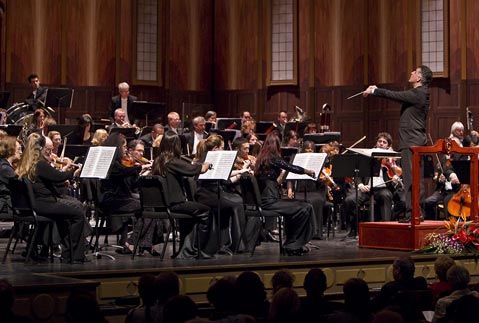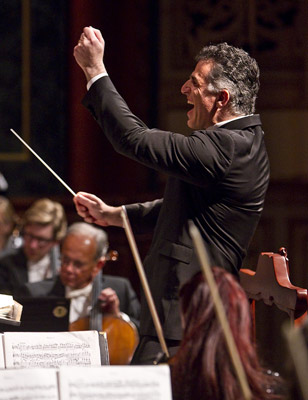
In the period since his rediscovery in the 1950s, the symphonies of Gustav Mahler have proven irresistible to conductors the world over. They are widely acknowledged as the summits of symphonic achievement—not just longer, but more complex and sophisticated than even the greatest works of the classical period. On Saturday, maestro Nir Kabaretti and the Santa Barbara Symphony successfully scaled the heights of what may be Mahler’s most dazzling single work, the Symphony No. 5 in C-sharp Minor. All of Mahler’s work requires precision and passion from the players, but only the Fifth calls for a veritable army of winds and brass instruments to realize its awesome blast of musical expression. And the Symphony rose to the occasion, pressing into service a band that included three piccolos, four flutes, three oboes, English horn, three clarinets, bass clarinet, two bassoons, contrabassoon, six horns, four trumpets, three trombones, tuba, tympani, percussion, harp, and the usual full complement of strings.

From the outset of the nearly 70-minute symphony, the brass and the percussion asserted themselves. Tympani and trumpet exchanged leads as the strings embroidered an intricate pattern beneath. Mahler was 41 when he began his Fifth Symphony, and he revised it for years afterward, striving for clarity within the context of musical abandon. The value of his hard work was evident in this rendition, as Kabaretti made the bones of the piece evident in each of its five movements. Mahler’s transformation of Bach’s polyphonic style in this work conceals its origins, while nevertheless communicating something of the earlier composer’s innate musicality. In the third movement, quieter passages created a sense of space that set the stage for the volcanic eruptions of the fourth and fifth. The Symphony created the gigantic, bass-heavy brass sound necessary to these final sections without ever slipping over into slackness and noise. This work tests the outer limits of the orchestra’s sonic range, and it was a pleasure to experience the fireworks with the clarity possible due to the Granada’s fine acoustics. From this wonderful finale, great expectations for the 2010-2011 season flowed.



